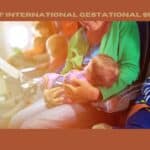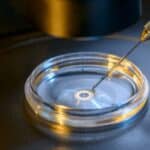It has just been announced that “the first known attempt at creating genetically modified human embryos” in the U.S. has been made. Through a new technique, often called CRISPR, germline modification can be made at the embryo stage—germline, meaning the genetically modified child would pass these changes onto future generations through his or her sperm or eggs (germ cells). You may recall that I attended the Beings2015 conference in Atlanta, and the ethics and policies around this technology were a main theme.
The concerns with the use of this technology can be broken down into these main headings:
Human Experimentation/Safety: To date, one of the major objections to employing this technique has been around safety concerns and the fact that we are basically learning if it is safe by doing it. This research is doing harmful and destructive research on human embryos that have no ability to consent to being created, manufactured, and used in such experiments. Even in 2015, the White House, under President Obama, said, “The Administration believes that altering the human germline for clinical purposes is a line that should not be crossed at this time.” Their position was based largely on concerns around safety and ethics. Fast forward to 2017, and nothing has changed to alleviate those safety and ethical concerns.
Egg Source: We have been on record for over a decade that the eggs needed to do this research and ramp it up to the scale that the scientific community desires will be supplied by young, healthy women. While many are working to create synthetic eggs, as of now, they don’t exist. Thousands of human eggs will be required putting many young women at risk.
Uses and Limits: While CRISPR technology has been touted as a way of treating/curing genetic diseases passed by parents onto their children, clearly if and when this technology is perfected there will be more and more pressure to use it to modify, design, and manufacture human lives to our preferences. The genie will be out of the bottle, and it will be difficult if not impossible to rein it back in.
Rogue Scientists: Read carefully the first sentence in the announcement. “The first known attempt . . .” How many unknown attempts have been made? We don’t know and have no way to know. The announcement closes with this worry: “. . . the creation of a gene-edited person could be attempted at any moment, including by IVF clinics operating facilities in countries where there are no such legal restrictions.”
There is clear uneasiness with this development. The hope is that regulation will prevent such abuses. But this hope is misplaced. It’s clear that regulation will not prevent such abuses. Someone, somewhere, will abuse it. The best way to prevent such abuses is to reject this all together.
Author Profile

- Jennifer Lahl, MA, BSN, RN, is founder and president of The Center for Bioethics and Culture Network. Lahl couples her 25 years of experience as a pediatric critical care nurse, a hospital administrator, and a senior-level nursing manager with a deep passion to speak for those who have no voice. Lahl’s writings have appeared in various publications including Cambridge University Press, the San Francisco Chronicle, the Dallas Morning News, and the American Journal of Bioethics. As a field expert, she is routinely interviewed on radio and television including ABC, CBS, PBS, and NPR. She is also called upon to speak alongside lawmakers and members of the scientific community, even being invited to speak to members of the European Parliament in Brussels to address issues of egg trafficking; she has three times addressed the United Nations during the Commission on the Status of Women on egg and womb trafficking.
Latest entries
 infertilityApril 23, 2024The Rise of International Gestational Surrogacy in the U.S.
infertilityApril 23, 2024The Rise of International Gestational Surrogacy in the U.S. Assisted Reproductive TechnologyApril 16, 2024Founder Jennifer Lahl’s Speech on Surrogacy to the Casablanca Declaration
Assisted Reproductive TechnologyApril 16, 2024Founder Jennifer Lahl’s Speech on Surrogacy to the Casablanca Declaration #BigFertilityFebruary 27, 2024No, Alabama Didn’t Ban IVF
#BigFertilityFebruary 27, 2024No, Alabama Didn’t Ban IVF ArticleSeptember 25, 2023The Little Engine That Could
ArticleSeptember 25, 2023The Little Engine That Could

